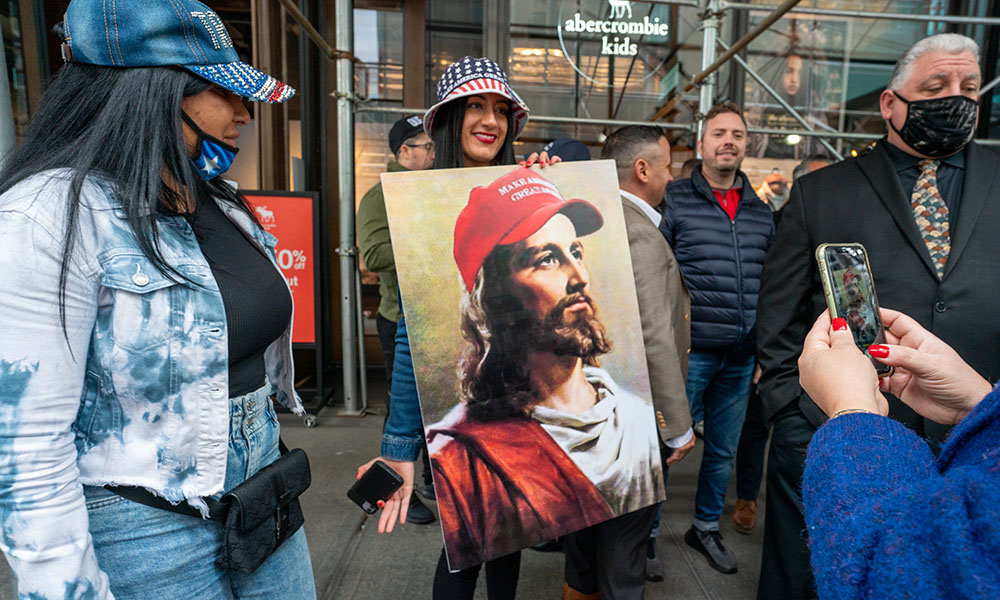A University of Rochester scholar explains how early modern resistance theory is inspiring far-right individuals to defy local, state, and federal laws.
Until recently, a text known as the Magdeburg Confession, written by a group of Lutheran pastors in 1550, was the kind of document that scholars labored over, but few others.
A statement of protest against the imposition of Catholic rule during the Augsburg Interim, the Magdeburg Confession was also an attempt to specify the circumstances under which subjects could resist ruling authorities on religious grounds. The Protestant Reformation confronted Christian rebels with a dilemma: how could they live according to their religious conscience if the laws of Catholic rulers demanded they violate it? The Magdeburg Confession became a key document in the development of a branch of early modern European political thought called resistance theory.
But if you want to find out more about the Magdeburg Confession—and if you turn first to an internet search—you’ll most likely encounter a website called Magdeburgconfession.com, the project of suburban Milwaukee pastor Matthew Trewhella, a founder of the radical anti-abortion group Missionaries to the Preborn. Trewhella is notorious for once calling the murder of abortion providers justifiable homicide, and more recently, likening COVID mask mandates to Nazi laws that targeted Jews in the run-up to the Holocaust.
For at least a decade, Trewhella has been building a movement drawing on 16th-century resistance theory to justify and promote disobedience toward certain state and federal laws on Biblical grounds, explains Anna Rosensweig, an associate professor of French and of visual and cultural studies at the University of Rochester and an expert on early modern French literature and political theory.
The movement, part of a rising trend toward Christian nationalism in the United States, is taking hold.
“I basically do Twitter searches every day, tracing local elections,” she said early in November 2022. References to resistance theory, she found, were “all over the place.”
On social media, podcasts, radio, and websites, far-right Christians in the US have been pointing to Trewhella’s 2013 self-published book, The Doctrine of the Lesser Magistrates: A Proper Resistance to Tyranny and a Repudiation of Unlimited Obedience to Civil Government, as something like a how-to manual. The book invokes the Magdeburg Confession, as well as another 16th-century resistance text, The Right of Magistrates (1575), by John Calvin’s protégé, Théodore de Bèze, to urge a revival of a Christian theological understanding of the limits to governmental power. Activists inspired by the book have cited the lesser magistrate doctrine as justification for disobeying COVID-19 mask and vaccine mandates, and for a Kentucky county clerk’s defiance of a federal court order to issue a marriage license to a same-sex couple.
Among the book’s most prominent boosters is Michael Flynn, former National Security Advisor under President Donald Trump, who has praised it as “a masterful blueprint showing Americans how to successfully resist tyranny.”
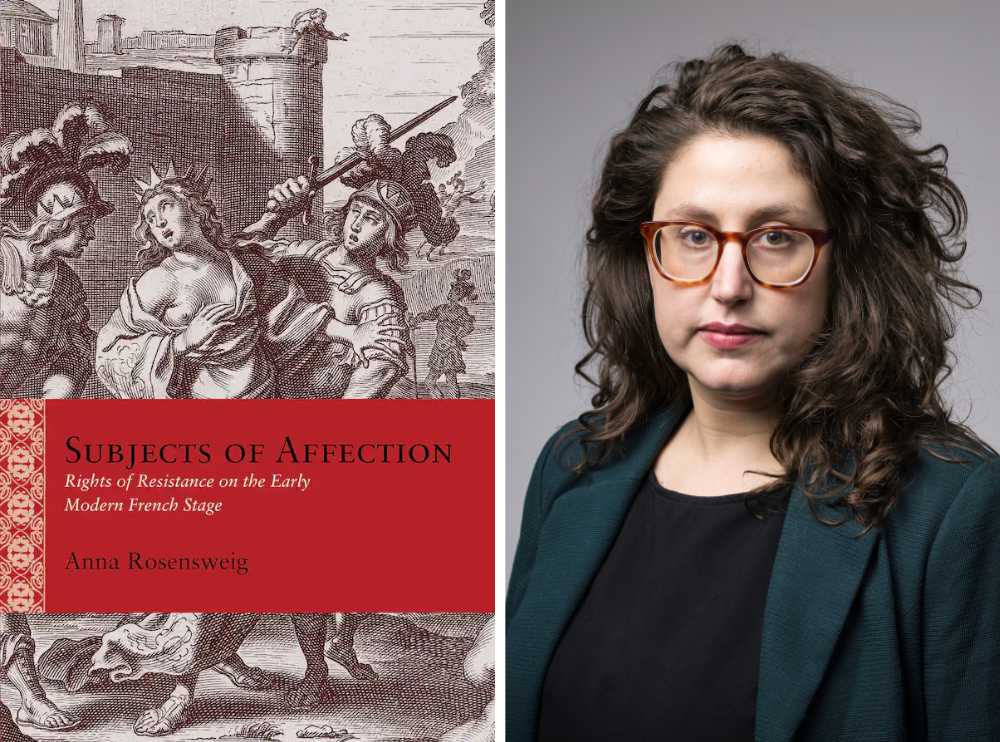
Religious conflicts and the right of resistance
Rosensweig did not start out with the intention of studying the far right. Her probing into far-right conversations about resistance started as a bit of a side path, one she says raises important questions about how we read texts from the distant past, interpret them in the present, and potentially borrow from them as inspiration for our own actions and outlook.
Late in 2021, she published Subjects of Affection: Rights of Resistance on the Early Modern French Stage (Northwestern University Press), an examination of the ways in which French dramatists during the 17th-century absolutist reign of King Louis XIV continued to explore the idea of droit de résistance (right of resistance) through invented characters on the stage.
As Rosensweig explains, resistance theory emerged as religious conflicts “strained notions of France as a unified spiritual and political community.” She cites as a turning point the 1572 St. Bartholomew’s Day Massacre, in which France’s royal family authorized the murders of French Huguenot (Calvinist) leaders, unleashing mob violence against Protestant laypeople as well. The slaughter contributed to a burgeoning of resistance writings, in which Calvinist philosophers and theologians grappled with the urgent need to justify resistance to monarchical rule while not opening the door to anarchy.
To walk that fine line, “resistance treatises held that all subjects could recognize tyranny, but they drew a distinction between those who could actively resist a tyrant and those who could not,” Rosensweig writes. “Private subjects, or particuliers, could recognize tyranny, but only those who had a public function, or personnes publiques, could organize active resistance.”
Resistance theorists’ public person was generally understood to be a noble or magistrate. But what if such a person failed his duty to respond to tyranny? What then?
Philosophers and theologians advanced a slightly broader notion of the public person to account for such cases. Someone who did not hold an office could also fulfill the role of the public person. Social status played a large role in determining who among the non-office-holding public qualified as a public person, but, Rosensweig argues, a close reading of the texts shows that “social status alone was not sufficient for a personne publique to act on the people’s behalf. A personne publique had to have an emotional bond with the people.”
That criterium still left the concept of the public person “capacious,” she says. And that’s one reason why, during Louis XIV’s absolutist reign, when resistance theory was widely believed to be all but dead, 17th-century French dramatists such as Robert Garnier, Jean de Rotrou, Pierre Corneille, and Jean Racine, created a rich body of works exploring the possibilities and limits of the hazily defined public person.
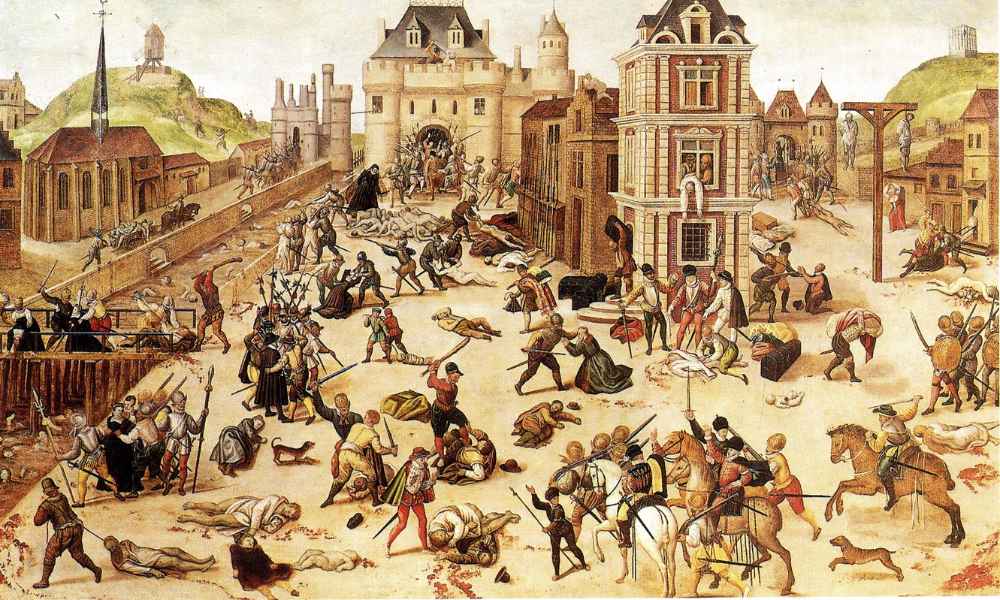
Who ‘owns’ resistance theory?
Trewhella has advanced his own understanding of the public person—or lesser magistrate, which is the term he uses, following de Bèze. In a recent essay in Modern Language Quarterly (MLQ), Rosensweig considers Trewhella’s interpretation of the concept.
“Trewhella’s central argument is that the US government has amassed too much power over the lives and livelihoods of the people and has thus become a tyrannical force,” she writes. “The government’s tyranny, he laments, has gone unchecked by the clergy and other religious officials.”
Although the nation’s founders gave pastors and congregations some means of resisting tyranny, according to Trewhella, religious leaders have largely neglected to invoke the “lesser magistrate doctrine,” which would have reminded ministers and their flocks of their sacred duty to resist civil laws that infringed on Christian ones. Through The Doctrine of the Lesser Magistrates, Trewhella attempts to revive the forgotten idea and encourage Christian leaders—and if they neglect their duty, any person of Christian faith—to resist federal, state, and local laws that violate their religious ideals.
Rosensweig argues that Trewhella glides past the nuance of the lesser magistrate concept as it was shaped in the 16th century and elaborated on in the 17th, “reduc[ing] Protestant resistance theory to a doctrine that applies easily to every new outrage,” she writes. But aside from that and a couple other critical observations, she resists the urge to dismiss Trewhella and his adherents as poor readers of the texts. In some respects, he’s read them quite well.
“Resistance theory is both individual and collective at the same time, and in complicated ways,” she says. In the 16th century, resistance theorists evoked the idea of “the people” as a unified entity. Dramatists in the 17th century recognized the ways in which “the people,” as a concept, is continually in flux, shaped and reshaped by those who seek to be its representative, Rosensweig explains. That’s a critical point that Trewhella grasps.
“Although he would not put it in these terms, Trewhella seems to understand that in early modern resistance theory, invocations of ‘the people’ are performative,” she writes. Rosensweig uses the term performative not in the colloquial sense, to mean disingenuousness, but in the formal, technical sense, which is to bring into being the thing that it states. By invoking “the people,” as Trewhella did in praising “the people” for resisting mask mandates, he helped bring into being an idea of a unified body of people “that carries with it specific conceptions of what is good, virtuous, and just.”
Resistance theory after the 2022 elections
In the month or so since the 2022 midterm elections, Rosensweig has continued to follow online conversations about resistance in Christian far right circles. Contemporary Christian nationalist discourse has “multiple intersections with resistance theory,” she says. “I don’t think these ideas are going away any time soon.”
In November, a new book, The Case for Christian Nationalism (Canon Press, 2022), started getting a lot of attention in some right-wing circles. The author of the book, which includes a section on the concept of the lesser magistrate, is Stephen Wolfe, a Protestant scholar with a PhD in political philosophy from Louisiana State University who also completed a postdoctoral fellowship at Princeton University in its James Madison Program in American Ideals and Institutions. According to Rosensweig, Wolfe’s book shows that the use of resistance theory in the service of Christian nationalism should not be dismissed as a fringe idea.
That has her concerned, and not simply because Christian nationalism is a direct threat to the freedom to worship as one sees fit—or not to worship at all. Like many scholars in the humanities, Rosensweig chooses to address the bias of perspective by disclosing her own. In MLQ, she describes herself in relation to the Christian far right as “a professor of literature and culture who has long thought about early modern resistance theory and its relevance to the contemporary political moment from a vastly different perspective.”
For example, to illustrate contemporary echoes of resistance theory, Rosensweig likes to point to former Texas state senator Wendy Davis as an illustration of the public person. In 2013, Davis made national news with an 11-hour filibuster to block passage of a bill to make abortion illegal in the state after 20 weeks, as well as enact a host of other restrictions. On live TV, with crowds of supporters inside the capitol, Davis read testimonials from women who had written to her, sharing emotional, personal experiences of how an abortion had saved their lives. Davis served in the role of the public person not simply because she was an elected official; her real power came from having created and demonstrated an “affective relationship between [her] and a wider collective of women,” Rosensweig writes.
It’s hard to imagine a political perspective as distant from the Christian far right as this one. And yet, what resonates with Rosensweig about resistance theory is its appeal to a collective good; that is, the idea that a good society is not simply the sum total of individuals exercising personal liberties. In this one important way, Rosensweig, a self-described secular leftist, and Christian nationalists share a similar preoccupation.
“Part of why I’m really invested in 16th-century resistance theory is that it gives us a way of thinking about how individual freedoms are linked to deep-seated ideas of collective salvation,” she says. Yet, “we in the United States don’t have a tradition of talking about moral assumptions around the good of the community in ways that are non-religious.”
In spite of the gulf between Rosensweig’s notion of the collective good and someone like Trewhella’s or Wolfe’s, her background in resistance theory enables her to understand Christian nationalism in ways that many secular, liberal Americans don’t.
“I think what’s really at stake for them is damnation,” Rosensweig says. A woman who gets an abortion is perceived as infringing on Trewhella’s freedom, for example, “not because he can’t do all the things that he wants to do in the world directly, but because it threatens the goodness of the community he lives in and its connection to God,” she says. Likewise, those who read and studied Trewhella’s Doctrine of the Lesser Magistrates would see the Capitol police officers who confronted insurrectionists on January 6, 2021, “as lesser magistrates who have lost their virtue.” And those who raided the Capitol as filling that void, resisting tyranny in the name of the people.
“Having my background makes me able to understand the logic of their position,” she says, “and I feel like I have a responsibility to help other people understand.” But to understand in order to join the conversation—and to prevent Christian nationalists from claiming a rich tradition as exclusively their own.
“The objects that we study don’t have an inherent moral or aesthetic good. There are a lot of possibilities about how they can be used,” she says.
Centuries of history and literature make for a deep well to draw on. Having some understanding of them “is important and useful in ways that we can’t always anticipate.”
Read more
 What the midterm elections tell us about the stability of US democracy
What the midterm elections tell us about the stability of US democracy
Rochester political scientists discuss what happens when election deniers run for office, and how US democracy may die ‘by a thousand cuts.’
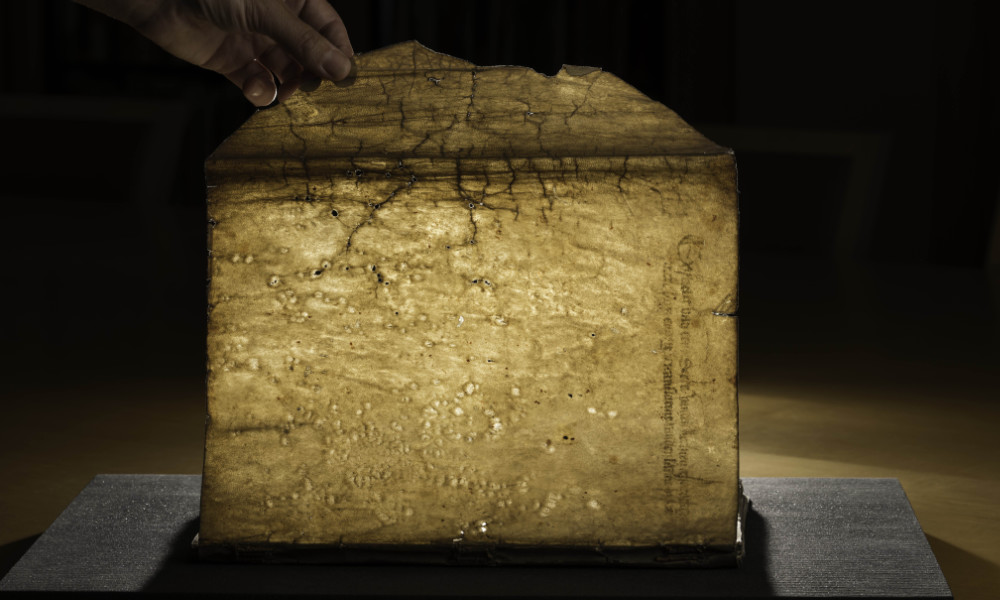 Wormholes and stains add to backstory of medieval manuscript’s acquisition
Wormholes and stains add to backstory of medieval manuscript’s acquisition
The 700-year-old French manuscript is the first in a new University of Rochester library collection that honors historian Richard Kaeuper.
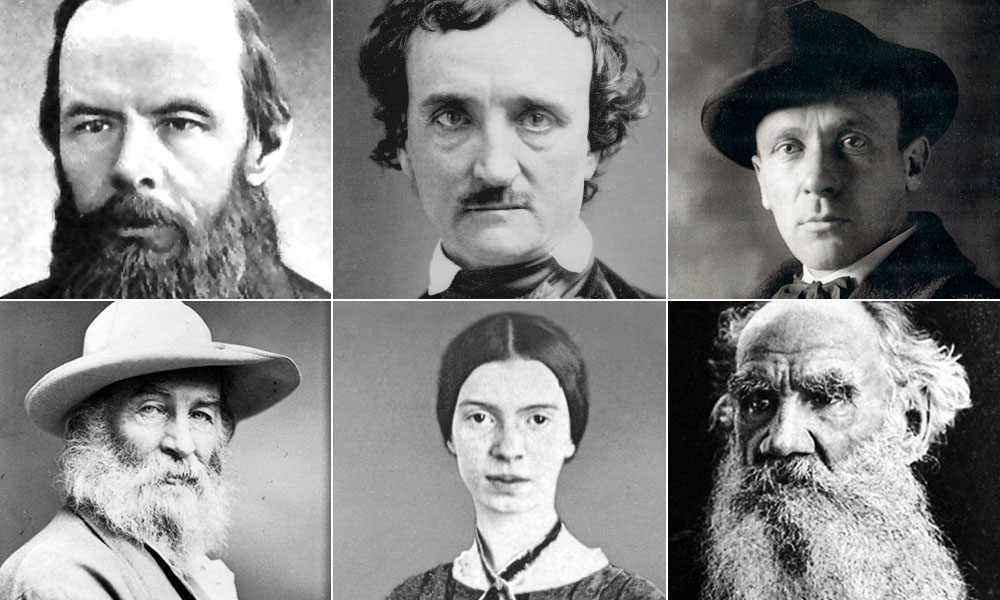 What is belief in a secular age?
What is belief in a secular age?
Rochester scholars John Givens and John Michael examine the lives of iconic writers to ask what religious belief might look like in an age of science and secularism.


